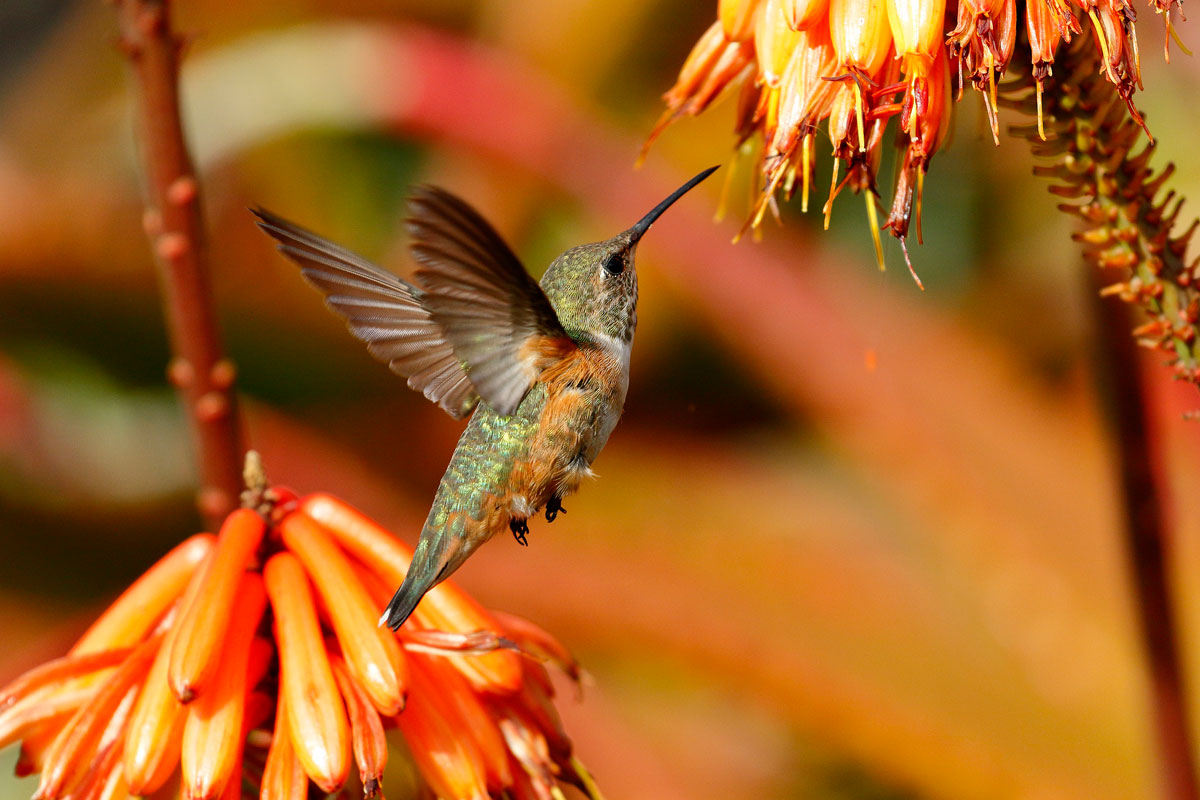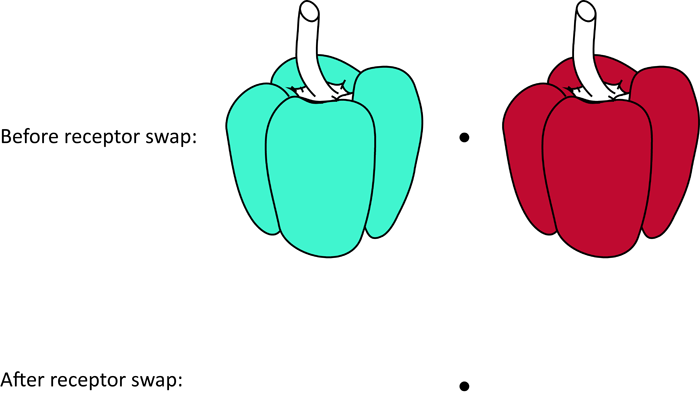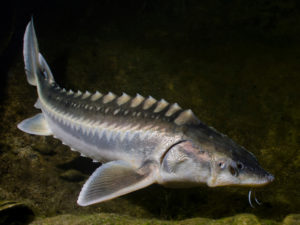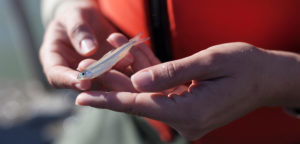Do hummingbirds have taste buds? What, if anything, do we know (and how can we, if at all) about how they experience the sweetness of the nectar they imbibe? -Sarah Rabkin, Soquel, CA
Great question! The short answer is yes, hummingbirds have taste buds — just not the ones you think.
It is well known that hummingbirds prefer more concentrated nectar, but only very recently have we discovered how they can tell if a flower or feeder has the good stuff (i.e. sucrose, a.k.a. sugar) or just water. Flowers visited by hummingbirds in the wild contain sucrose concentrations ranging from 7 percent to 60 percent, but they most commonly contain about 24 percent sucrose, which is also the concentration suggested for filling artificial feeders (one-quarter cup white granulated sugar thoroughly mixed into 1 cup of water, no dye or coloring needed). At this concentration, hummingbirds can tell the difference between sucrose concentrations differing by just 1 percent. So they have taste buds, and their taste buds work!
Before I get to the mechanism by which hummingbirds detect sucrose, I should tell you that all birds are missing the only known gene responsible for tasting sweetness (the one that is used by most other vertebrates). Birds have been missing this gene since they diverged from the non-avian dinosaurs (even hummingbirds are in fact dinosaurs). The sweet taste receptor produced by this gene is called T1R2 and no birds tested to date have it. So if hummingbirds are missing this receptor, how in the world do they detect the presence of sugar? The answer has to do with umami.
Umami is the savory taste found in fish, mushrooms, tomatoes, cheese, and soy sauce, and compounds making up these flavors are detected collectively by two taste receptors called T1R1/T1R3. By sequencing the DNA of hummingbirds, swifts (close relatives of hummingbirds), and chickens, Maude Baldwin and her colleagues found in 2014 that contrary to its use for detecting savory amino acid compounds in swifts and chickens, the hummingbird version of T1R1/T1R3 has evolved to respond instead to sucrose and other carbohydrates. So although hummingbirds have taste buds, and use them to detect the presence of sugars in the nectar they drink, they use different ones than the ones we use.
Your second question was about how they experience the sweetness of the nectar they imbibe. The only potentially relevant way I know to talk about perceptual or other “internal experiences” is to look at patterns of brain activity while the corresponding stimuli are occurring.
So it will be helpful to first describe what happens in humans when we ingest sugar. When sugar molecules bind to T1R2 sugar receptors in the taste buds on your tongue, the receptors send electrical impulses to the primary taste cortex in your brain. The primary taste cortex then relays the message to the primary reward pathway and ultimately results in your brain being bathed in the cozy pleasure of the neurotransmitter dopamine.
(As an interesting aside, in people that don’t regularly consume artificial sweeteners, both sucrose and artificial sweeteners activate the primary taste pathway, giving you the, “Hey that tastes great!” feeling — but only sucrose goes on to activate the primary reward pathway, giving you the, “Ahhhhh…” shortly after the first swig or bite (see this 2013 Scientific American article by Caitlin Kirkwood for the details).
The brains of birds and humans have been diverging from those of our common ancestors for about 200 million years, so they are structurally very different. Remarkably though, certain regions of bird brains, such as the nidopallium caudolaterale, show similar responses to gambling as do the prefrontal cortex and reward pathways in humans. For example, certain cells in the brains of pigeons taught to gamble at miniature slot machines begin to fire and release dopamine as anticipation of a payout builds, and others fire upon the inevitable loss-but-almost-won. Presumably, hummingbird brains are also bathed in dopamine when they taste and ingest sugars, which we can perhaps interpret as being a “pleasurable experience” for the bird.
So what does it mean that hummingbirds use the T1R1/T1R3 umami taste receptor to detect sugar? Does the sugar water hummingbirds drink taste sweet or savory? Personally, I’ve had a lot of fun thinking about hummingbirds loving what we think of as the umami flavor.
As a final example, you can try the following visual analogy yourself: Assume your favorite color is red (flavor sucrose) and that you cannot physically survive without eating red bell peppers (drinking sugar water). But through some evolutionary quirk, your eyes are now playing a trick on you whereby your red receptors now respond to green and your green receptors now respond to red. Now stare at the black dot in the middle of the two bell peppers in the figure below for 30 seconds and then look at the second black dot near the bottom.
You should see a lovely, life-saving red bell pepper (the one on the right), but to you it now looks green! Your body still needs you to eat what are in reality red bell peppers, so you end up really enjoying peppers that look green to your new senses.
Regardless of whether sugar tastes sweet or savory to hummingbirds, their brains probably get a similar reward to ours as the sucrose is consumed. So in some sense they may just experience the standard, “Ahhhhh.”
Marc Badger is a biologist and Postdoctoral Scholar in the Combes Lab at UC Davis, where he studies the biomechanics and behavior of maneuvering flight and obstacle avoidance in hummingbirds and bees. He received his PhD from UC Berkeley and his work was recently featured in National Geographic.
Ask the Naturalist is a reader-funded bimonthly column with the California Center for Natural History that answers your questions about the natural world of the San Francisco Bay Area. Have a question for the naturalist? Fill out our question form or email us at atn at baynature.org!





